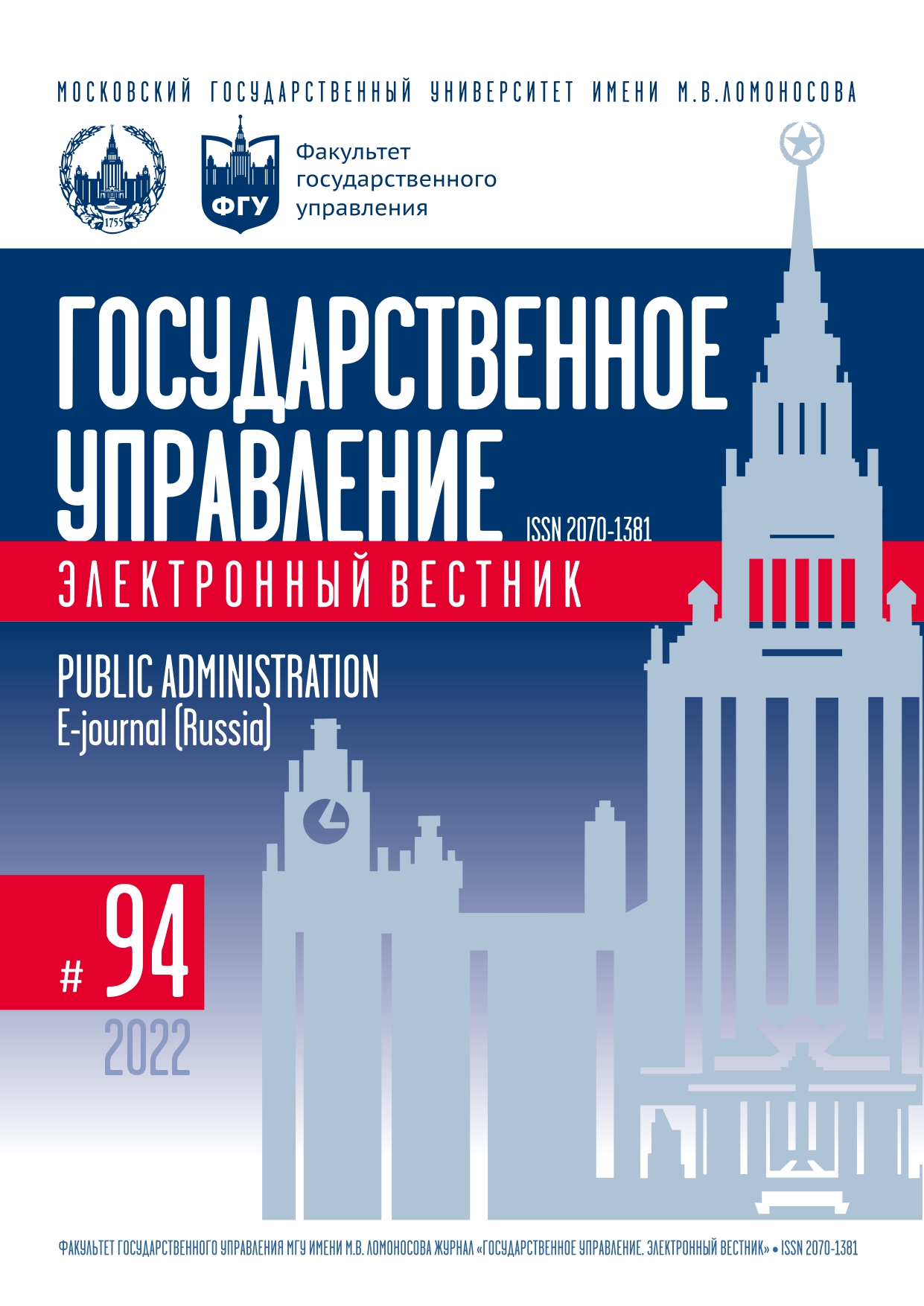Probability of Bankruptcy: Are the Forecasting Models Reliable?
Keywords:
Bankruptcy, bankruptcy forecasting, model of forecasting, financial insolvency, construction industryAbstract
For many years, bankruptcy forecasting has been in the sphere of interests of a wide group of stakeholders: regulators, investors, creditors, rating agencies, auditors, consultants and company management. In this regard, development of new and improvement of existing models for assessing the risk of companies’ insolvency remain an urgent research issue. The goal of the study is to identify the factors contributing to the bankruptcy of companies in the construction industry and the development of approaches to risk assessment of their insolvency. The choice of the industry is explained by the growing number of financial distressed companies and bankruptcies in this sector of economy in recent years and the profound social consequences of bankruptcies: the loss of savings of the broad strata of the population (participants in shared-equity construction) and the inability for them to improve housing conditions for a long time, the job losses for a significant number of workers employed in this labor-intensive industry. To achieve the goal of the study, the authors have made a forecast of the probability of Russian companies’ bankruptcy in the construction industry and conclusions about the level of reliability of the results obtained on the basis of traditional fundamental models. The conducted study and the obtained results may serve as a strong argument for the necessity to develop new approaches and models for bankruptcy forecasting, for the importance of taking into account the country and industry specifics. The article makes a significant step in this direction: the approaches to identifying signs of financial distress and the probability of bankruptcy are clarified, key control points critical for predicting the probability of bankruptcy in construction industry and directions of their prevention are identified.
References
Бобылева А.З. Проведение анализа финансового состояния должника в процедурах банкротства: проблемы и решения // Право и экономика. 2017. № 11. С. 26–31.
Бобылева А.З., Львова О.А. Финансово-экономический инструментарий выявления признаков объективного банкротства // Актуальные проблемы экономики и права. 2020. Т. 14. № 1. С. 22–39. DOI: 10.21202/1993-047X.14.2020.1.22-39
Клочихин Г.А., Полунин Г.М. Использование нейросетевых моделей при прогнозировании банкротства предприятий // Хроноэкономика. 2018. № 2 (10). С. 107–110.
Ковалев В.В. Финансовый анализ: методы и процедуры. М.: 2002.
Коссова Т.В., Коссова Е.В. Оценка кредитного риска компаний российского корпоративного сектора на основе прогнозирования вероятности дефолта по обязательствам // Проблемы анализа риска. 2011. Т. 8. № 2. С. 68–78.
Львова О.А. Возможности и ограничения применения моделей диагностики банкротства для предупреждения несостоятельности // Вестник Московского университета. Серия 6: Экономика. 2021. № 4. С. 73–94.
Макушина Е.Ю., Шихлярова И.А. Моделирование вероятности банкротства российских нефинансовых компаний // Финансы и кредит. 2018. Т. 24. № 1. С. 95–110. DOI: 10.24891/fc.24.1.95
Федорова Е.А., Гиленко Е.В., Довженко С.Е. Модели прогнозирования банкротства: особенности российских предприятий // Проблемы прогнозирования. 2013. № 2 (137). С. 85–92.
Хиггинс Р.С. Финансовый анализ: инструменты для принятия бизнес-решений. М.: Вильямс, 2007.
Шеремет А.Д., Негашев Е.В. Методика финансового анализа деятельности коммерческих организаций. М.: НИЦ «Инфра-М», 2019.
Altman E.I. Financial Ratios, Discriminant Analysis and the Prediction of Corporate Bankruptcy // Journal of Finance. 1968. Vol. 23. Is. 4. P. 589–609. DOI: 10.1111/j.1540-6261.1968.tb00843.x
Bai Q., Tian S. Innovate or Die: Corporate Innovation and Bankruptcy Forecasts // Journal of Empirical Finance. 2020. Vol. 59. P. 88–108.
Beaver W. Financial Ratios as Predictors of Failure // Journal of Accounting Research. 1966. Vol. 4. P. 71–111. DOI: 10.2307/2490171
Beaver W.H., Correia M., McNichols M.F. Financial Statement Analysis and the Prediction of Financial Distress // Foundations and Trends in Accounting. 2011. Vol. 5. Is. 2. P. 99–173. DOI: 10.1561/1400000018
Bernstein L. Analysis of Financial Statements. New York: McGraw-Hill, 2000.
Fedorova E., Ledyaeva S., Drogovoz P., Nevredinov A. Economic Policy Uncertainty and Bankruptcy Filings // International Review of Financial Analysis. 2022. Vol. 82. DOI: 10.1016/j.irfa.2022.102174
Garcia J. Bankruptcy Prediction Using Synthetic Sampling // Machine Learning with Applications. 2022. Vol. 9. DOI: 10.1016/j.mlwa.2022.100343
Heaton J.B. The Altman Z Score Does Not Predict Bankruptcy // AIRA Journal. 2020. Vol. 33. Is. 3. DOI: 10.2139/ssrn.3570149
Jardin P. Dynamic Self-Organizing Feature Map-Based Models Applied to Bankruptcy Prediction // Decision Support Systems. 2021. Vol. 147. DOI: 10.1016/j.dss.2021.113576
Ohlson J.A. Financial Ratios and the Probabilistic Prediction of Bankruptcy // Journal of Accounting Research. 1980. Vol. 18. Is. 1. P. 109–131. DOI: 10.2307/2490395
Platt H.D., Platt M.B. Financial Distress Comparison across Three Global Regions // Journal of Risk and Financial Management. 2008. Vol. 1. Is. 1. P. 129–162. DOI: 10.3390/jrfm1010129
Qu Y., Quan P., Lei M., Shi Y. Review of Bankruptcy Prediction Using Machine Learning and Deep Learning Techniques // Procedia Computer Science. 2019. Vol. 162. P. 895–899. DOI: 10.1016/j.procs.2019.12.065
Shen F., Zhao X., Kou G., Alsaadi F.E. A New Deep Learning Ensemble Credit Risk Evaluation Model with an Improved Synthetic Minority Oversampling Technique // Applied Soft Computing. 2021. Vol. 98. DOI: 10.1016/j.asoc.2020.106852
Shumway T. Forecasting Bankruptcy More Accurately: A Simple Hazard Model // Journal of Business. 2001. Vol. 74. Is. 1. P. 101–124. DOI: 10.1086/209665
Taffler R.J. Forecasting Company Failure in the UK Using Discriminant Analysis and Financial Ratio Data // Journal of the Royal Statistical Society: Series A (General). 1982. Vol. 145. Is. 3. P. 342–358. DOI: 10.2307/2981867
Tian S., Yu Y., Guo H. Variable Selection and Corporate Bankruptcy Forecasts // Journal of Banking and Finance. 2015. Vol. 52. P. 89–100. DOI: 10.1016/j.jbankfin.2014.12.003
Traczynski J. Firm Default Prediction: A Bayesian Model-Averaging Approach // Journal of Financial and Quantitative Analysis. 2017. Vol. 52. Is. 3. P. 1211–1245. DOI: 10.1017/S002210901700031X
Zmijewski M. Methodological Issues Related to the Estimation of Financial Distress Prediction Models // Journal of Accounting Research. 1984. Vol. 22. P. 59–82. DOI: 10.2307/2490859

